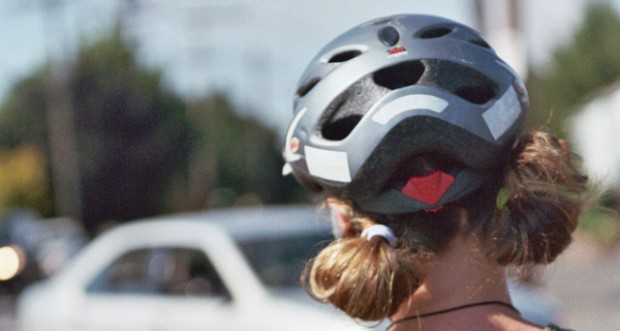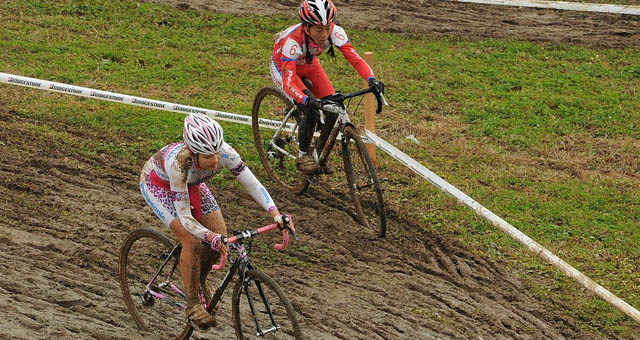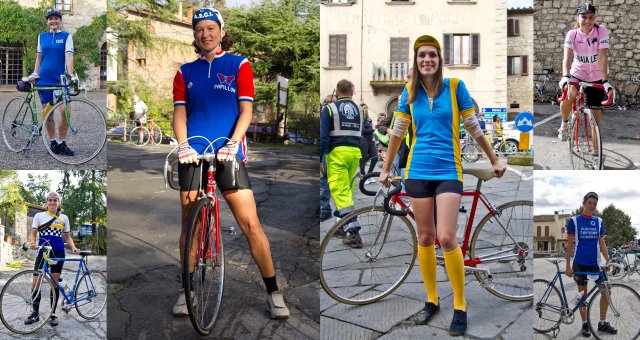Want to get more room on the road while riding your bike? Here’s one way. Have drivers judge that you’re female.

Sam B blogs at Fit, Feminist and Almost Fifty where we spotted this interesting opinion piece on how motorists treat cyclists, specifically female cyclists on the road. It was so thought provoking, we felt it necessary to share.
We’re sure you’re going to have an opinion after reading this, so don’t be shy, share your thoughts with us in the comments section below.
Study after study shows that drivers give more room when passing female cyclists. They also give more room to riders without helmets but that’s another issue.
The original study was done in here in the UK by Ian Walker. Highlighted below is his pivotal argument, but you can read more about his findings on his website.
“Research suggests drivers tend to believe helmeted cyclists are more serious and less likely to make unexpected moves … the helmet effect seen here is likely a behavioural manifestation of this belief. The gender effect could be the result of female cyclists being rarer than male cyclists in the UK, or it may again be related to drivers’ perceptions of rider experience and predictability.”
His results have since been duplicated in the United States by the Department of Transport in Florida. The US study found that on average drivers passed cyclists more closely when cyclists were dressed in “bicycle attire” and if the cyclist was male. The study was unable to determine the reasons on this passing behaviour and the authors of the study speculated that, “it [was] possible that motorists perceived less risk passing riders who were in [a] bicycle outfit.”
It’s a bit of a double-edged sword really. Who doesn’t want to be safer riding in traffic? But there’s no explanation of the why of this phenomena that doesn’t give off a whiff of sexism. Some researchers speculate it’s old-fashioned chivalry, being nice to the ladies. But others raise the more worrying possibility that it’s because female riders are judged less competent, as more wobbly, and less able to hold their line.
Similarly, like the implicit bias studies with which philosophers concerned with equity in academia are familiar, the sex of the vehicle driver doesn’t matter. Both women and men behind the wheel of a car give female riders more room.
There are lots of examples of unequal treatment about which we’re unaware. It’s not like people set out to pass men more closely than they do women. Here’s another example of a very small inequality that’s trivial really, interesting only because no one knows they’re doing it.
In “Ladies First? A Field Study of Discrimination in Coffee Shops” American economist Caitlin Knowles Myers, with her students as research assistants, staked out eight coffee shops in the Boston area and watched how long it took men and women to be served. Her conclusion: “Men get their coffee 20 seconds earlier than do women.” And it’s not just women who wait longer. The researchers found that the young wait longer than the old, and the ugly wait longer than the beautiful, and of course this has nothing to do with who ordered what and the propensity of women to order flat white, soy lattes, no foam, coffee concoctions. Economists are smart people and they took that into account.
Originally, I thought of the close passing example on analogy with the coffee example. Implicit bias yields small inequality. But I’ve been reading David Benatar’s book Second Sexism: Discrimination Against Men and Boys and I started to wonder if it’s more serious than that.
No one’s died waiting for coffee but cyclists do die when cars pass with insufficient room. Though it’s the kind of accident all cyclists fear, fewer than 20% of car-bike crashes occur this way. That said – the stats on close passing make me wonder if more of those accidents happen to men, proportionally speaking. Benatar has some chilling stats on the higher accidental workplace death rates of men and boys (and not all from risky behaviour, as you might want to insist.) It’s a frustrating book in many ways but certainly what it makes clear is not all victims of implicit bias are female.
This makes me a tad nervous coming into spring. I have broad shoulders and short hair. I might consider a clip on extension ponytail! Wearing pink won’t help, as plenty of male cyclists do that and many male cyclists seem to shave their legs. There are motorbike helmets with added fake ponytails. Why not bike helmets? The group I rode with last in Australia were the Valkyrie Vikings. Blond braided pigtails anyone?
Since reading the studies, I’ve tried to observe my own behaviour as a driver but that turns out to be as tricky as it is in the cases that involve the evaluation of one’s own bias in ranking academic work. It’s surely a case of implicit bias, rather than explicit; since few people would say that they make a conscious decision to give women cyclists more room on the road.
This article was originally posted on Sam’s blog; Fit, Feminist, and (almost) Fifty.





